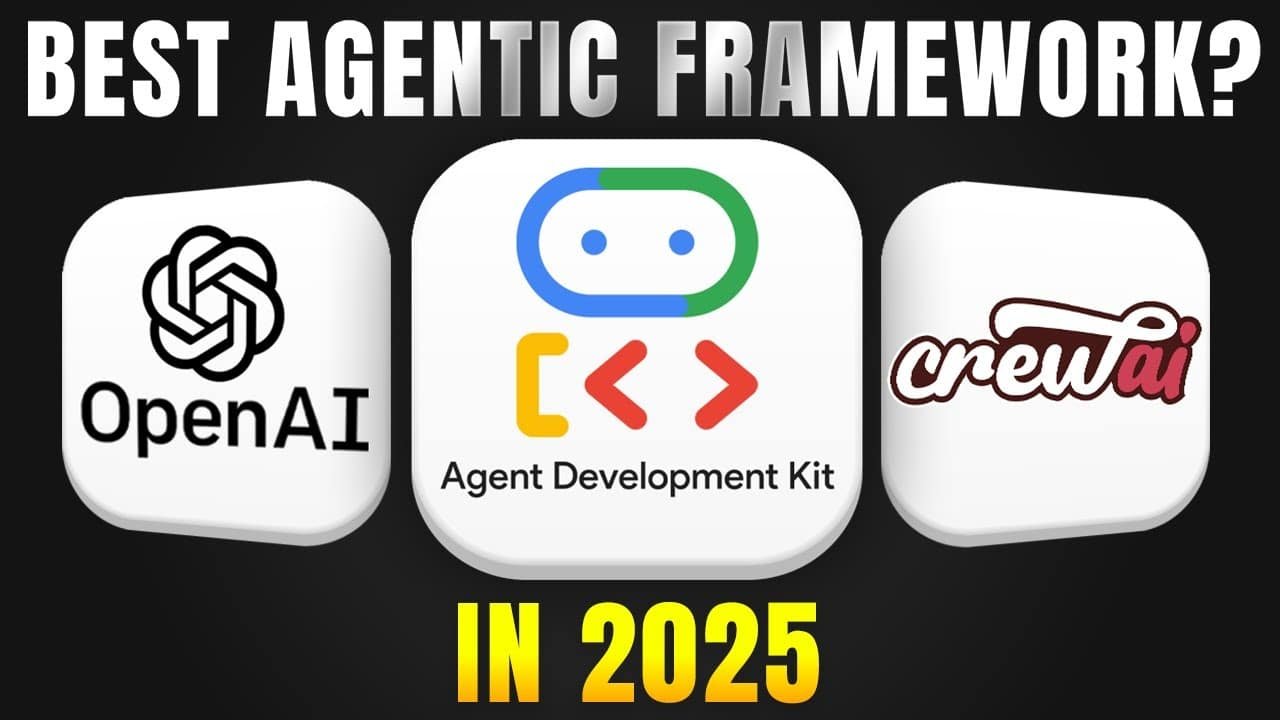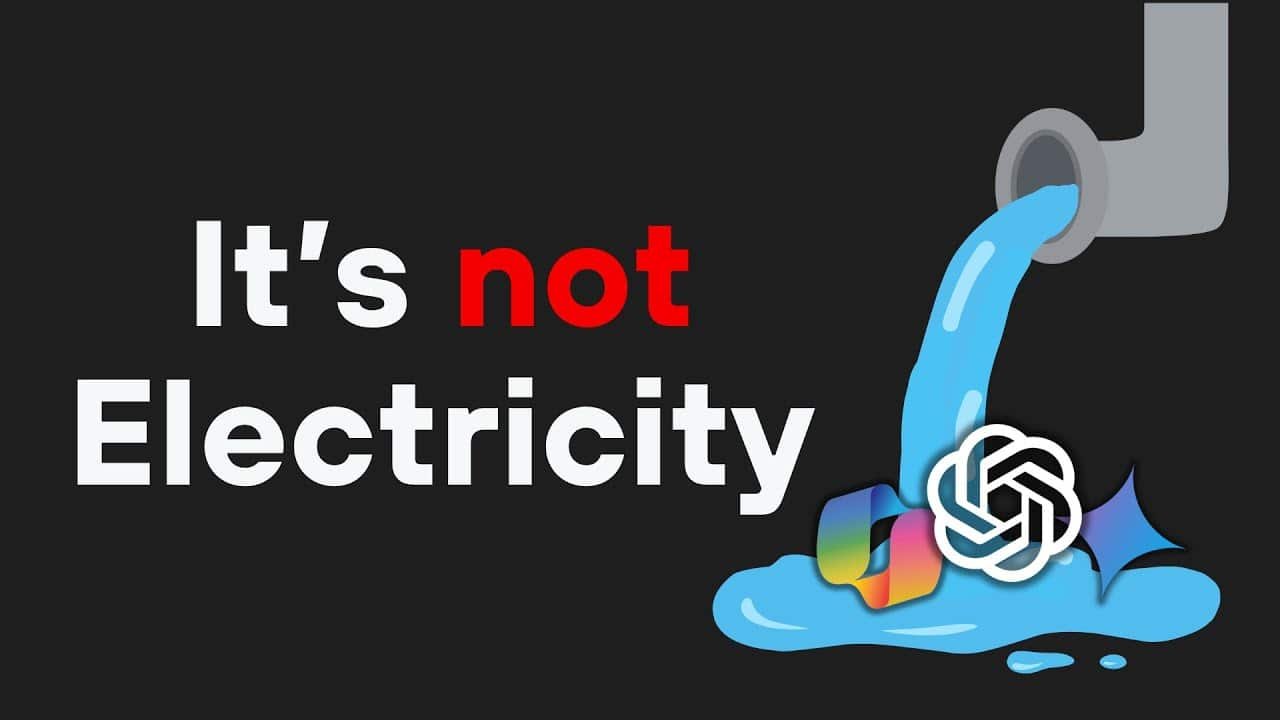How to Make Money with AI Model Training Jobs in 2025 | Is Alignerr Legit?
Introduction: The Promise of Easy Money in AI
Let’s face it – we’ve all seen those flashy ads promising incredible earnings for minimal effort. The latest trend? Getting paid to train AI models. When I first stumbled across Alignerr’s website promising up to $150 per hour for teaching AI, my scepticism meter immediately shot into the red zone. But I’ve been in the digital economy long enough to know that sometimes, beneath the hype, there are legitimate opportunities worth exploring.
In this comprehensive analysis, I’m taking you along as I investigate Alignerr and the broader landscape of making money by training AI systems. Is this the next big side hustle, or just another disappointing “get-rich-quick” scheme dressed in AI clothing? More importantly, I’ll share what I’ve discovered actually works for regular people looking to capitalize on the AI boom.
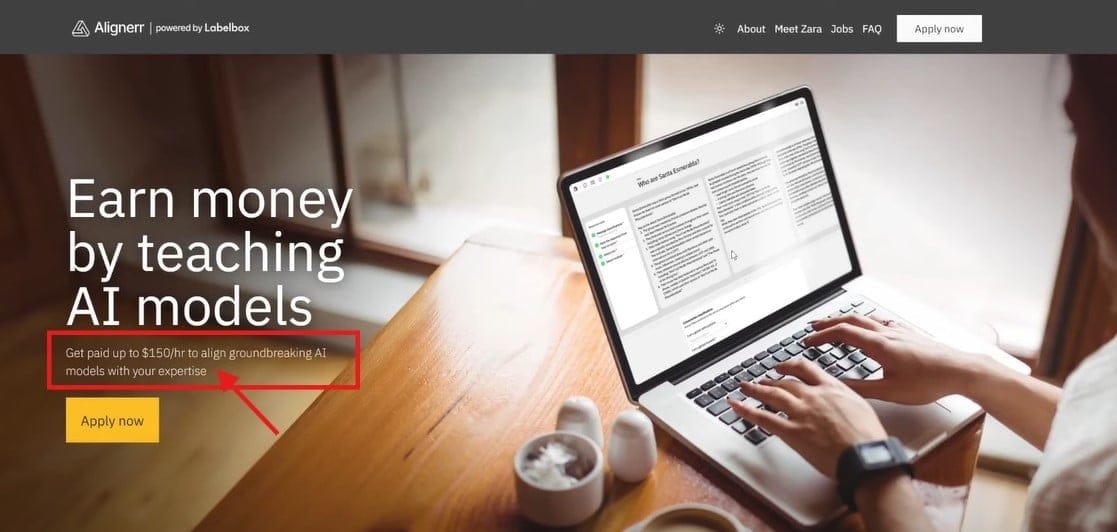
What Is Alignerr? First Impressions and Red Flags
When you land on Alignerr’s website (allignerr.com), you’re immediately greeted with big bold promises: “Get paid up to $150/hour to train AI models.” The site features an impressive list of supposed partner companies, including 11Labs – a legitimate and successful AI voice generation company.
Scrolling down, the promises continue:
- Work from home opportunity
- Earn extra cash on the side
- Learn new skills
- Transparent pay
- And my personal favorite: “AI Innovation” – where they claim you’ll “play a pivotal role in shaping the future of artificial intelligence”
That last one really caught my attention. Not only are they promising substantial hourly rates ($150/hr is more than many professionals with advanced degrees make), but they’re also offering the chance to be at the forefront of technological evolution. If that sounds too good to be true… well, you know how that saying ends.
The Job Listings: What Does Alignerr Actually Want You to Do?
Digging deeper into their site, I found several job categories, with “Generalist” being the most prominent. According to the listing, your daily tasks would include:
- Evaluating AI-generated writing based on various criteria
- Reviewing the work of other human writers
- Producing “top-tier original content” in response to prompts
The requirements seemed surprisingly basic:
- Associate’s degree
- Proficiency in English, German, Spanish, Vietnamese, or French
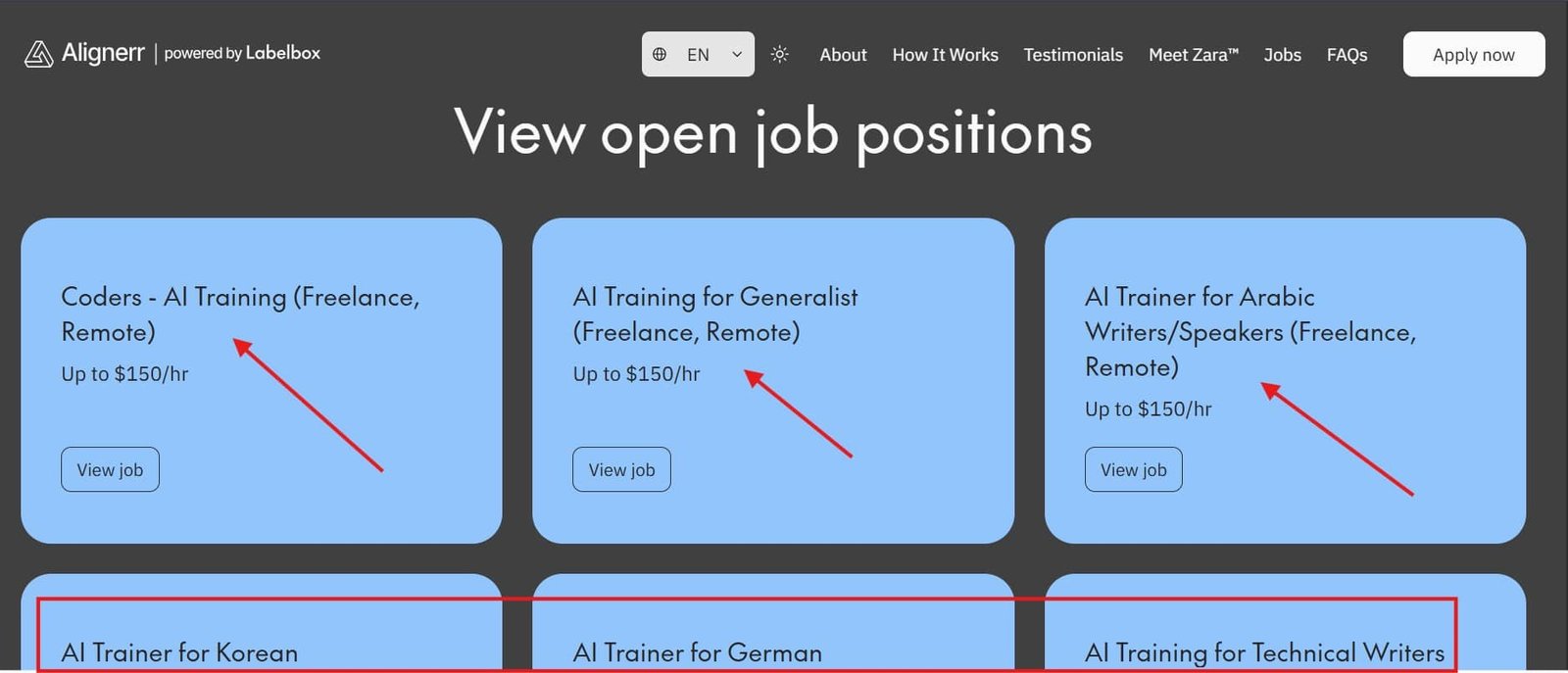
The Application Process: A Major Red Flag
My skepticism grew when I investigated the application process. After clicking “Apply Now,” you’re asked to upload a resume (PDF or DOC format), which seems standard enough. But here’s where things get strange – instead of a traditional screening call with a recruiter or hiring manager, Alignerr uses an “AI Interview.”
Yes, you read that right. A company promising to pay you to train AI wants to interview you using an AI named “Zara.” This 15-minute video interview supposedly “delves deeper into your skills and passions” while you show your face to a faceless robot.
This raised immediate red flags for me. Why would a company supposedly paying premium rates ($150/hr) for human expertise use an automated system for interviews? This approach feels more aligned with mass-hiring for low-wage positions than selective recruitment for highly-paid specialists.
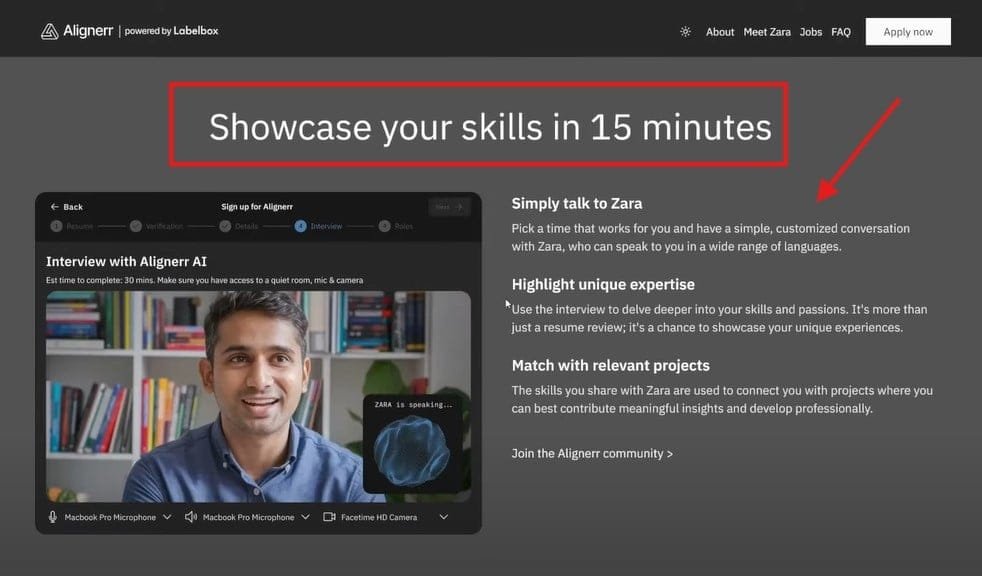
The Reality Behind AI Training Jobs: My Experience in the Industry
I’ve spent over five years working adjacent to AI development teams, and I can tell you with confidence that legitimate AI training and evaluation typically falls into several categories:
1. Specialized Annotation Work
Companies like Scale AI and Appen hire people to label images, transcribe audio, or annotate data – but these roles typically pay $15-25/hour for experienced workers, not $150. The work is meticulous and often requires specific domain expertise.
2. AI Evaluation and Feedback
Some organizations do hire people to test AI systems and provide feedback – but again, the rates are nowhere near $150/hour unless you’re a specialized consultant with advanced degrees and years of experience in the field.
Case Study: Sarah’s Experience as an AI Data Annotator
Sarah, a former colleague who worked for a major AI data annotation platform for 14 months in 2023-2024, shared her experience with me:
“I started out labeling images for autonomous vehicle training at $14/hour. After six months and becoming a team lead, I reached $22/hour. The work was steady but repetitive, and required significant attention to detail. No one on our 200+ person team was making anywhere close to $100/hour, let alone $150.”
3. Microtask Platforms
What Alignerr’s process strongly reminds me of are platforms like Clickworker or Amazon Mechanical Turk, where people perform small tasks for minimal compensation. These platforms sometimes include AI training tasks, but the pay is often measured in cents, not hundreds of dollars per hour.
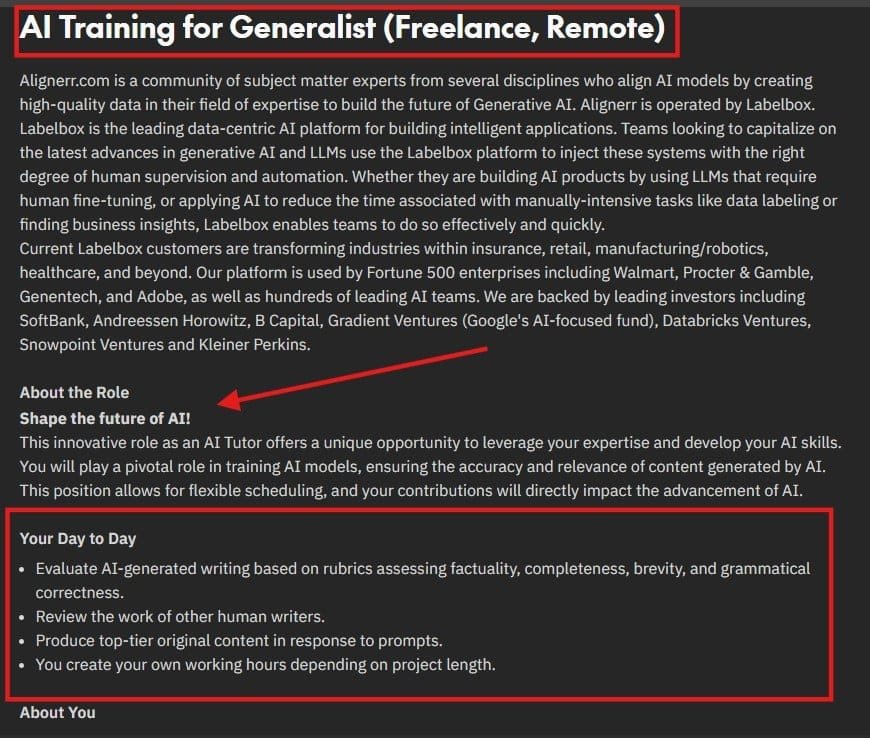
Searching for Verification: What Others Are Saying About Alignerr
After my initial investigation, I tried to find independent reviews or testimonials from actual Alignerr workers. Despite the company having a presence on Twitter/X and claiming to work with major AI companies, I found surprisingly little third-party verification of their claims.
This lack of verifiable success stories is concerning for a platform promising such substantial compensation. Legitimate high-paying opportunities typically generate buzz in online communities, Reddit threads, or industry forums.
The Economics Don’t Add Up: Why $150/Hour Doesn’t Make Sense
Let’s think about this logically. If Alignerr were truly paying $150/hour for relatively unskilled labor (remember, they only require an associate’s degree and language proficiency), they would be massively overpaying compared to market rates.
Even specialized AI feedback roles at major tech companies rarely exceed $50-75/hour for contractors, and those positions typically require advanced degrees or specialized experience. Companies that develop AI models operate with careful budgets and would not pay 3-5x market rates without extraordinary justification.
Expert Insight: AI Development Economics
I spoke with Miguel, a machine learning engineer at a San Francisco AI startup, who explained:
“The economics just don’t work. For general feedback on AI outputs, companies can easily find qualified people for $20-30/hour. The only scenarios where rates approach $150/hour involve highly specialized subject matter experts – like medical doctors reviewing healthcare AI, or attorneys evaluating legal AI systems. And even then, those engagements are typically structured as professional consulting, not hourly feedback work.”
What Actually Works: Legitimate Ways to Profit from the AI Boom
Despite my skepticism about Alignerr, there are genuine opportunities for people to earn money in the expanding AI ecosystem. Based on my experience and research, here are approaches that actually work:
1. Building and Selling AI Chatbots
As mentioned in the original script, this is one of the most accessible opportunities. Local businesses increasingly want chatbots, but lack the technical knowledge to implement them. Using tools like Abacus AI ($10/month) or Replit ($15-25/month), you can create customized chatbots with minimal technical knowledge.
Case Study: Mark’s Chatbot Business
Mark, a digital marketing consultant I met at a business networking event, shared his experience pivoting into chatbot creation:
“I started offering chatbots to my existing marketing clients in late 2023. Using no-code AI tools, I’ve built over 40 chatbots for local businesses – everything from real estate agents to restaurants. I charge $500-2,000 per chatbot depending on complexity, and make an additional $100-300 monthly for maintenance and updates. The best part is that each new bot only takes me about 5-10 hours to build now that I have my process down.”
Mark’s experience demonstrates the scalability of this approach. At $500 for a basic chatbot that takes 5 hours to build, he’s effectively earning $100/hour – not quite Alignerr’s promised $150, but it’s verifiable and sustainable.
If you’re interested in more ways to earn from home, don’t miss my guide on how to make money with AI remote jobs, where I break down real opportunities like Mindrift and other platforms in 2025.
2. AI Prompt Engineering and Optimization
Companies are increasingly hiring people who can craft effective prompts for large language models. This specialized skill involves understanding how AI systems interpret instructions and creating prompts that generate optimal outputs.
Real-World Example: Prompt Engineering Marketplace
On Upwork and Fiverr, top-rated prompt engineers charge $50-150/hour for creating custom prompt templates that help businesses get consistent, high-quality outputs from models like GPT-4. This is skilled work that requires practice and experimentation, but doesn’t demand a computer science degree.
I’ve personally tested this market by offering prompt optimization services to three small business clients. One e-commerce client paid $400 for a comprehensive set of prompts for customer service scenarios – work that took me approximately 6 hours to complete and test.
3. AI Model Fine-Tuning for Specific Industries
With platforms like OpenAI offering fine-tuning capabilities, there’s growing demand for specialists who can customize AI models for specific industries or use cases.
Case Study: Elena’s Healthcare AI Specialization
Elena, a registered nurse who took a coding bootcamp, combined her healthcare knowledge with basic AI skills to create specialized versions of large language models for medical offices. She charges $3,000-5,000 per project to fine-tune models on medical practice documentation, patient communication templates, and healthcare compliance language.
“Healthcare providers are willing to pay premium rates for AI that understands their specific terminology and compliance requirements,” Elena told me during a recent AI healthcare meetup. “I’m not a programmer – I use platforms with accessible interfaces, but my healthcare knowledge is what clients value.”
4. Teaching AI Skills to Others
As AI tools become more accessible, there’s increasing demand for trainers who can teach non-technical people how to use these tools effectively.
I’ve witnessed several former teachers and corporate trainers successfully transition to offering AI workshops and courses. Local chambers of commerce, community colleges, and business networking groups are all venues where AI training commands $500-2,000 per session.
5. Content Creation Enhanced by AI
Perhaps the most accessible opportunity is using AI tools to enhance your own content creation business. Writers, marketers, and creators who effectively leverage AI can dramatically increase their output quality and quantity, allowing them to serve more clients at higher rates.
Personal Experience: Scaling My Content Business
In my own content creation business, implementing AI workflows has allowed me to increase my effective hourly rate from $65 to over $120 without raising prices to clients. The key was using AI for research aggregation and first-draft generation, while focusing my time on strategic thinking, creative angles, and sophisticated editing – the elements that clients value most.
Tools That Actually Help You Monetize AI Skills
If you’re serious about earning from the AI boom, investing in the right tools is crucial. Based on my testing and industry connections, these are the platforms that deliver real value:
1. Abacus AI ($10/month)
As mentioned in the original script, Abacus AI provides a natural language interface for creating AI agents and models without coding knowledge. It’s particularly valuable for those looking to build customer-facing AI solutions.
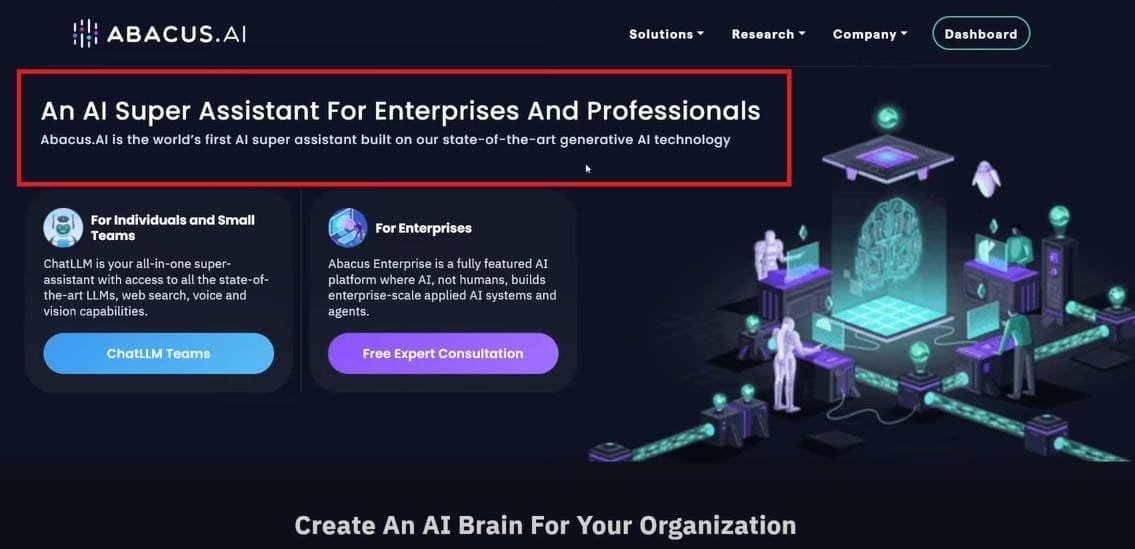
2. Replit ($15-25/month)
Also mentioned in the script, Replit offers more advanced capabilities for those willing to learn some basic coding concepts. It’s excellent for creating more sophisticated chatbots and AI applications.
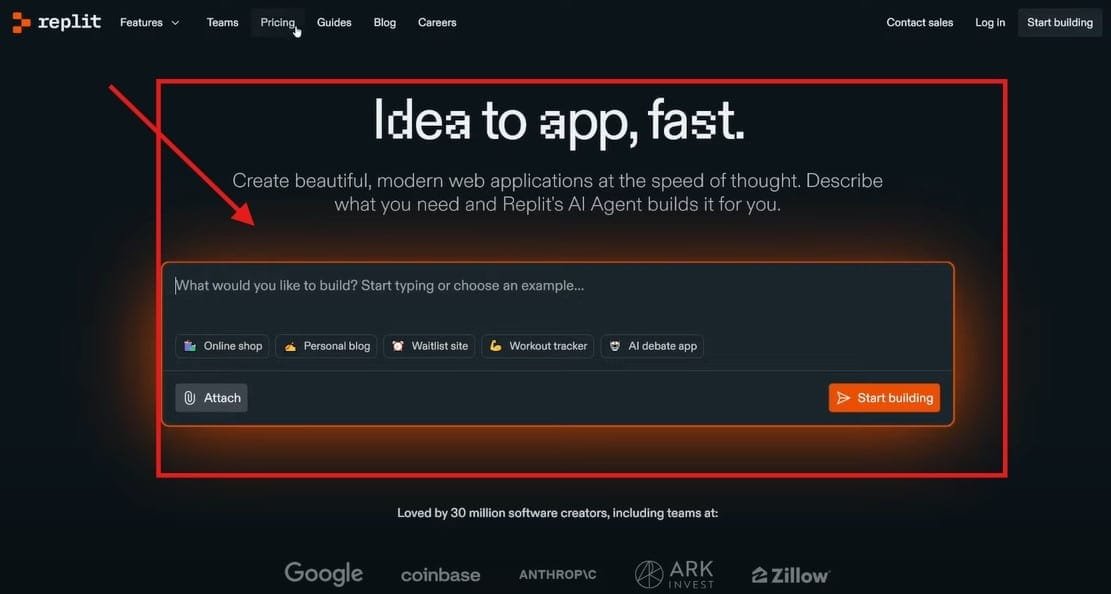
3. Anthropic Claude ($20/month)
Claude’s excellent context window and reasoning capabilities make it particularly valuable for complex content creation and research tasks. Many successful AI-enhanced freelancers I know consider it essential for their workflows.
4. GPTs by OpenAI ($20/month with ChatGPT Plus)
The ability to create custom GPTs without coding has opened up numerous opportunities for creating specialized AI assistants that can be marketed to specific industries or use cases.
5. Taskade AI ($15-30/month)
This AI-powered project management tool has become popular among freelancers who offer AI implementation services, as it streamlines the process of creating and managing AI workflows for clients.
[IMAGE RECOMMENDATION: Comparison chart showing the key features and price points of these five tools]
Why Most “Get Paid to Train AI” Opportunities Fall Short
Returning to platforms like Alignerr, there are fundamental reasons why these opportunities rarely deliver on their promises:
1. The Scale Economics Problem
AI companies need massive amounts of training data and feedback. To make the economics work, they typically need to obtain this data at very low per-unit costs. This is why legitimate AI training work often pays modestly – companies simply cannot afford to pay premium rates for the volume of data they need.
2. The Skill Mismatch
The skills needed to effectively train cutting-edge AI systems are often highly specialized. Companies developing frontier AI models typically need people with advanced degrees or specific domain expertise – not general internet users.
3. The Business Model Question
When a platform’s business model isn’t transparent, it’s worth questioning. How exactly is Alignerr monetizing your work to justify $150/hour payments? Without a clear answer, skepticism is warranted.
My Take on Alignerr: Proceed with Extreme Caution
After thorough investigation, I cannot recommend pursuing Alignerr as a reliable income opportunity. The combination of extraordinary pay claims, the AI interview process, and the lack of verifiable success stories suggests this platform is unlikely to deliver the experience it promises.
At best, I suspect Alignerr may eventually offer much lower compensation than advertised once people progress through their funnel. At worst, it could be collecting resumes and personal information for purposes not clearly disclosed.
If you’re still curious, I’d recommend waiting until there are verifiable reports from actual users who have been paid the promised rates. Until then, the legitimate opportunities I’ve outlined above present much more reliable paths to monetizing the AI boom.

Conclusion: Focus on Sustainable AI Opportunities, Not Quick Money Promises
The AI revolution is creating genuine economic opportunities, but they rarely come in the form of simple, high-paying tasks anyone can do from home. Instead, the most reliable paths involve:
- Developing specialized skills that complement AI capabilities
- Creating AI-enhanced services for specific industries or needs
- Building products or solutions that leverage accessible AI tools
- Positioning yourself at the intersection of AI technology and human expertise
Rather than chasing promises of easy money for simple AI training tasks, I encourage you to invest your time in developing skills and services that will remain valuable as AI continues to evolve. The most successful people in the AI economy won’t be those who train models for hourly pay – they’ll be those who learn to effectively direct and apply AI capabilities to solve real-world problems.
Your Next Steps: Where to Start
If you’re interested in genuinely profiting from the AI revolution:
- Choose one of the legitimate paths I’ve outlined above based on your existing skills and interests
- Invest in 1-2 quality tools that align with your chosen direction
- Create 3-5 small projects to build your portfolio and expertise
- Connect with online communities in your chosen niche to accelerate learning
- Start by serving clients in your existing network to build case studies and testimonials
The AI economy rewards those who build genuine skills and deliver real value – not those chasing the latest “easy money” promises. By focusing on sustainable approaches, you’ll position yourself for long-term success in this rapidly evolving landscape.
Have you tried Alignerr or similar AI training opportunities? I’d love to hear about your experience in the comments below!
FAQ for “Is Alignerr Legit?
1. What is Alignerr?
Alignerr connects people with AI model training jobs, allowing you to earn money by labeling data, reviewing AI outputs, and improving AI models.
2. How Much Can You Earn?
Earn $25-$50 per hour depending on task complexity. Flexibility allows you to work as much or as little as you want.
3. Is Alignerr Legit?
Yes, Alignerr is legitimate. It’s a trusted platform with transparent pay rates and data secAlignerr offers flexible hours, so you can choose when and how much you work.urity.
4. Wat Skills Are Needed?
No formal AI training is required. Basic data analysis and attention to detail will help. Training materials are provided.
5. What Equipment Do You Need?
A computer with an internet connection is all you need. Some tasks may require additional software, provided by Alignerr.
6. How Flexible Are the Hours?
Alignerr offers flexible hours, so you can choose when and how much you work.
7. Can You Work from Anywhere?
Yes, Alignerr is a global platform, and you can work from anywhere with an internet connection.
8. How Do You Get Paid?
Alignerr pays via PayPal or bank transfer, typically on a weekly or bi-weekly basis.
9. What Tasks Are Available?
Tasks include data labeling, AI model reviews, and image/text annotation for AI training.
10. Are There Any Fees?
There are no fees to join or complete tasks, though taxes may apply to your earnings.
11. Is Alignerr Beginner-Friendly?
Yes, Alignerr is easy to start with and offers training for beginners in AI and remote work.
12. How Do You Apply for Jobs?
Create an account, browse tasks, and apply directly through the platform.
13. Can You Scale Earnings?
Yes, as you gain experience, you can access higher-paying tasks and more work opportunities.







